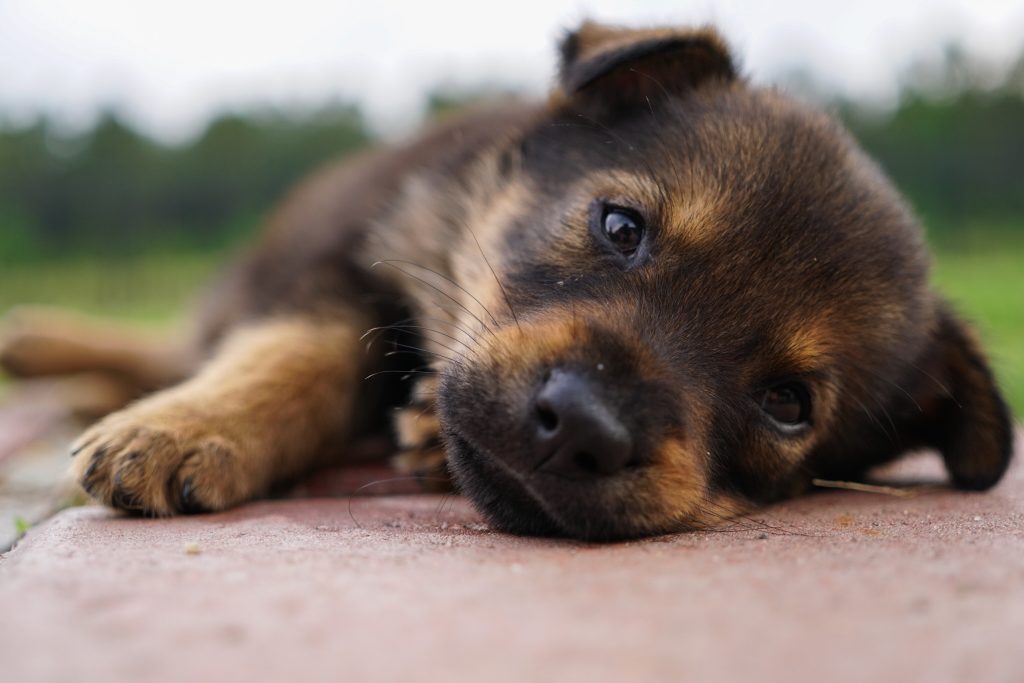Socialsation, a term that most (potential) dog owners will have come across. Most will also be roughly aware of what socialisation means. With this basic knowledge available, pup owners often start on the socialisation journey with all best intentions, but end up shaping the socialisation experiences incorrectly, which may impact the dogs social development. In this article, we will have a closer look at what socialisation is, but also what a proper socialisation experience looks like.
What is socialisation?
For a puppy to mature into a well-balanced and confident adult, they require socialisation. Socialisation learns a pup to be comfortable around everyday stimuli, and teaches them to remain confident in new situations. The most critical period for socialisation occurs in puppyhood, but socialisation is not exclusive to pups and also adult dogs require socialisation throughout their lives.
By socialising your dog you provide them with the opportunity to develop and learn important social skills they require in daily life. Socialising is done by exposing your dog or pup to different types of environments (sounds, textures, sensations, objects etc), interactions (with other animals, people of all ages etc) and experiences (being alone, fireworks, etc). Just exposing them however is not enough, it’s all about HOW this exposure happens, and we will discuss this further below in this article.

Critical socialisation period for pups.
The most critical period for socialisation happens when the dog is a pup, and the prime period for socialisation falls between the ages of 3-16 weeks. During this sensitive time a pup’s brain is primed for socialisation and learning, and they will rapidly determine what is safe and unsafe. They will also learn many important things when it comes to social behaviours during this period.
As the critical period for socialisation begins at 3 weeks of age, pups will still be with their mother and littermates when this period starts, and they will learn many important behaviours from each other such as biting inhibition and social cues. During this period, pups will also want to approach and interact with people, which should be encouraged. However, their interest in people doesn’t mean they can be separated from mother and siblings just yet, and doing so too early can have detrimental lasting effects. General consensus is that pups can leave their mother and littermates between the age of 8 to 12 weeks, with the absolute minimum being 8 weeks.
When a pup joins their new family at 8 weeks of age, or later, this means that an important part of the socialisation period has already passed. Reputable breeders will ensure pups receive proper socialisation during the period they stay with them, and also shelters and rescue centres will socialise the pups to their best ability. Pups that are born in puppy mills or at backyard breeders however, will miss out during an important socialisation period in their lives.
After a pup joins their new family, socialisation should continue once the pup has settled in, and they should be exposed to positive socialisation experiences. And even once the window closes of the critical socialisation period, pups and adult dogs should be exposed to regular interactions and different stimuli to keep practising the learned social skills. What happens to a dog in its puppy time will have lasting effects throughout their lives. But it is also important to know that older pups and even adult dogs can acclimate to new and unfamiliar stimuli.
When socialising your dog, keep in mind that pups that aren’t fully vaccinated, should not interact with unvaccinated or sick dogs, and should not visit places that are frequented by other dogs, until they are fully vaccinated. This to prevent them from picking up deadly viruses such as parvo disease. Also ensure that your pup gets plenty of rest and sleep to process all the new experiences, as providing inadequate rest can lead to overstimulation.
What does a correct socialisation experience look like?
A common mistake seen when socialising dogs and pups, is that they are put in uncontrolled situations for socialisation purposes, but then are left to fend for themselves and they don’t receive proper guidance. Leading to an inadequate socialisation experience, or even a socialisation experience which turns out negative. So what should a proper socialisation experience look like?
- The experience needs to happen in a gentle and safe manner.
- The experience needs to turn out positive.
- The exposure needs to be build gradually
- The experience needs to be low stress and of short intervals
- The experience should never be forced upon the pup.
To achieve this, as a dog/pup owner you can plan socialisation experiences. This way the interactions are controlled and you can set your dog/pup up for success. A common socialisation mistake is fully relying on uncontrolled situations, which increase the chances of creating negative experiences.
What would that look like in practice? Instead of taking your pup to a crowded park with kids to socialise them with children, invite a child that is familiar with dogs to your home, or visit a child in their home. This way you can ensure that the socialisation experience happens gently and safely, ends up being positive, low stress, and of a suitable time interval. Once your pup is familiar and comfortable in the controlled situations, you could slowly introduce them to more busy and uncontrolled situations outdoors.
Stimuli dogs should be socialised with.
Below are some examples of what your pup should be socialised with. This is not a complete list, but merely a tool to give ideas.
- People of different demographics (kids/adults/seniors/female/male, etc)
- Appearances (caps/umbrella’s/sunglasses/beard, etc)
- Touching of their body, like holding paws, looking in the mouth etc
- Baths/Nail clipping/etc
- Vet visits (touching/wearing a muzzle/weighing, etc)
- Car rides
- Noises (vacuum, loud cars, fireworks, sirens, screaming kids)
- Other animals (cat,dogs, horses, etc)
- Walks during daylight and nighttime
- Wearing a collar, walking on a lead
- Busy places
- Textures (wet grass/concrete/carpet, etc)
- Objects (balloons/brooms/pots/pan/etc)
Conclusion
Pups who miss out on proper socialisation, may turn out uncomfortable around everyday stimuli, which paves the way for fear, anxiety and aggression later on in life. So ensure you provide your pup with proper socialisation, so they have the opportunity to grow up into well-balanced adults.
If you wish to know more about our pet sitting, overnight pet care, pet relocation or dog training services, feel free to contact us. We will be happy to help.

